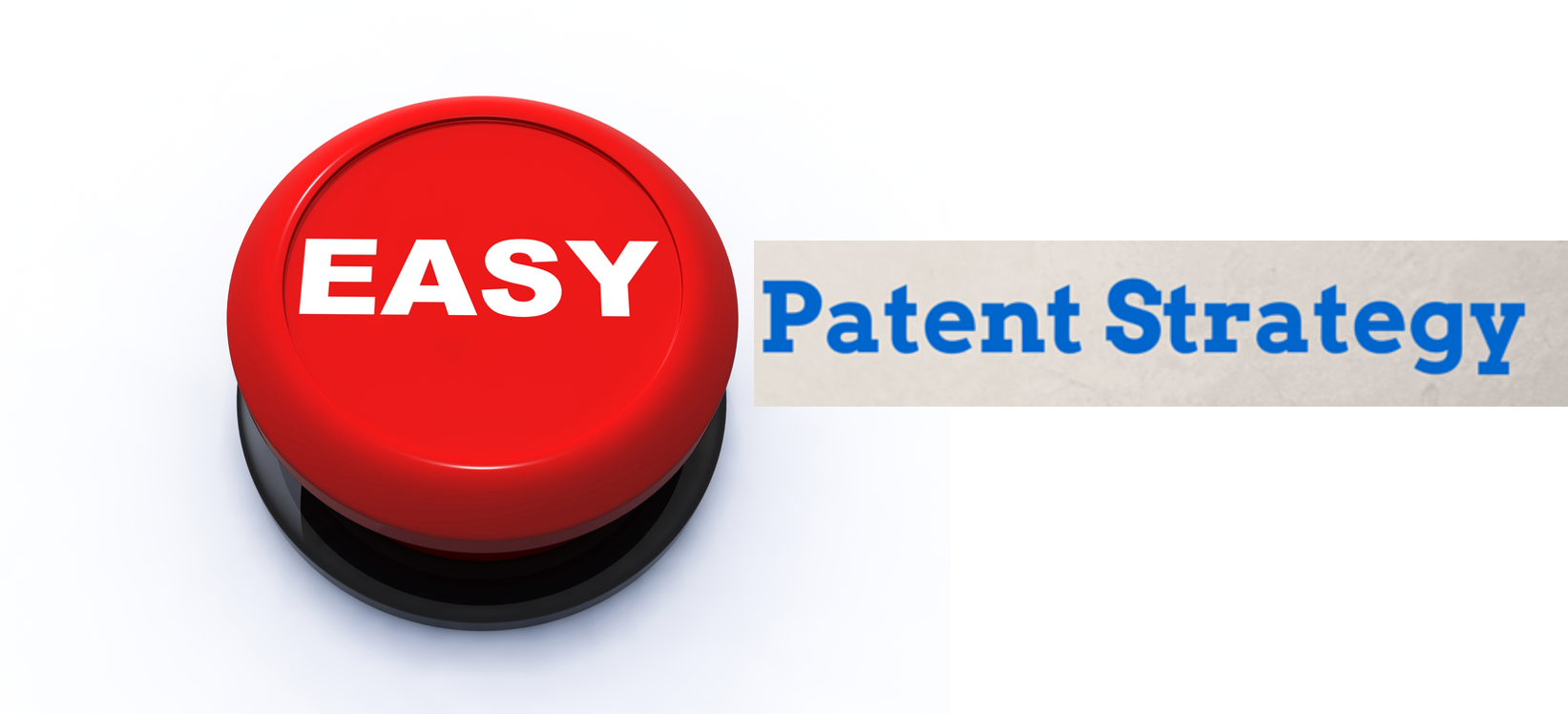 Patent professionals can do a better job providing patentability review, or "opinion," services for innovators. As most readers would recognize, a patentability review assesses whether the invention to be claimed will meet the legal requirements for patentability. In the US, this entails an assessment by a patent attorney, which can be based on a formal or informal search, whether the client’s invention is novel and non-obvious over the prior art. The rules by which a patent attorney makes a determination of patentability are well-established and would not be considered controversial by most experienced practitioners. Nonetheless, as an IP Strategist who works exclusively with clients engaged in developing and delivering meaningful innovations to consumers, I know that these entrenched patentability assessment practices deserve retooling for those clients who can be classified as "innovators." To this end, I believe that the way the patent
Patent professionals can do a better job providing patentability review, or "opinion," services for innovators. As most readers would recognize, a patentability review assesses whether the invention to be claimed will meet the legal requirements for patentability. In the US, this entails an assessment by a patent attorney, which can be based on a formal or informal search, whether the client’s invention is novel and non-obvious over the prior art. The rules by which a patent attorney makes a determination of patentability are well-established and would not be considered controversial by most experienced practitioners. Nonetheless, as an IP Strategist who works exclusively with clients engaged in developing and delivering meaningful innovations to consumers, I know that these entrenched patentability assessment practices deserve retooling for those clients who can be classified as "innovators." To this end, I believe that the way the patent
Patentability Reviews for Innovations
Better Patent Services for Innovators: Patentability Reviews
For the past 12 years as an IP Strategist, I’ve worked exclusively with clients engaged in developing and delivering innovative products to consumers. From this unique vantage-point, I think it’s time for some entrenched patentability assessment practices to be retooled for innovators. I’ve come to this conclusion because many of the ingrained patent application development processes in my profession consistently fail to properly address the non-standard nature of innovators’ products and technology when assessing the scope of patent protection that can, and should, be recommended to help these risk-takers extract maximum value from their efforts.
An example of how strategic IP-thinking differs from that of traditional patent attorney processes is that I believe the unique nature of an innovative product or technology itself should serve as the focal point of any patent protection strategy. Presumably, the identification of an unmet need in the market
Startup Patent Strategy: US Patent Non-Publication

Patenting for the Future: A New Approach for Innovators
The traditional patent model is configured to generate protection for an already completed invention. This, by definition, is a backward-looking approach and begs the question of why people are protecting what they have done in the past, when patents are supposed to be about protecting their future. Because strategy is about defining a desired outcome and working backward, an IP Strategist like me necessarily works with clients to identify why they are seeking patent protection in the first place. Only then do we develop a plan to achieve that business goal.
Experience shows that such forward-thinking strategies help innovators stay one step ahead of competitors by enhancing their ability to protect future revenue streams that are expected to occur with the introduction of innovative new products. When developing new products that customers will pay for in significant volumes, these innovators must “make it cheaper to go through them then around them. To do this requires a
How Companies Can Hit the Mark with Patents
As an IP Strategist, I’ve questioned time and time again why most patents fail to deliver the intended effect of bolstering long-term profits for their owners. I’ve concluded that too many patents read like diagrams intended for assembling products from separate pieces. This effectively means that the patenting process focused more on the structure of the product and not the functionality delivered. This is the opposite to what one needs to do: the customer buys the product’s function, not the structure. If you keep thinking and using the same ineffective patent strategies, you’re going to get the same results! I suggest you begin to think about patents from a different perspective to achieve the kind of success your company’s stakeholders will appreciate in today’s competitive market.
My approach to patents is different. Together with my client, we create patent protection directed to enhancing long-term profits to be generated by a company that successfully brings
Protecting Valuable Innovations? Throw Out the Old Patent Playbook and Try Something New
In the usual situation, a patent attorney is the “ball carrier” for the inventor as a patent application moves through the Patent Office. Each “play” in the “patent game” is focused on getting a patent application to the goal line as the “win” of an issued patent. However, when the primary objective is on winning, the focus necessarily becomes the patent itself, not the reason why the “patent game” is being played in the first place.
I have learned in my 20 + years as a business-focused patent attorney there is often a huge mismatch between the coverage of a patents and the business value that the patent creates for its owner. In other words, most clients look at the patent itself as a the “win,” and cannot articulate why they even played the patent game in the first place. When the patent is intended to protect valuable innovations, gaps in patent coverage and
IP Strategy is Increasing Focus at Innovative Companies: Here’s Why
 After more than 8 years, I can report that IP Strategy is an increasing focus at innovative companies, and there is a solid reason why this is so. By way of background, for many years, I have been part of a small minority of IP experts who advocate that companies desiring to maximize the value of their IP investments re-think the way they seek and obtain patents. In short, I and my IP Strategist peers urge companies to wrest control of their “IP destiny” from their legal service providers who have traditionally been seen as the primary drivers of the patenting process for their clients. Of course, readers of my regular ruminations know that my strongly held view is that “the
After more than 8 years, I can report that IP Strategy is an increasing focus at innovative companies, and there is a solid reason why this is so. By way of background, for many years, I have been part of a small minority of IP experts who advocate that companies desiring to maximize the value of their IP investments re-think the way they seek and obtain patents. In short, I and my IP Strategist peers urge companies to wrest control of their “IP destiny” from their legal service providers who have traditionally been seen as the primary drivers of the patenting process for their clients. Of course, readers of my regular ruminations know that my strongly held view is that “the
Product Companies Must Modify Patent Strategy When Adopting Innovation as Business Model
 I recently finished an IP Strategy engagement with major consumer products corporation, where I interfaced with the head of New Product Development and Innovation Strategy. This company is embarking on a major shift in the way it brings products to market. In short, the company is transitioning from one that introduces new products with incremental improvements into the market on a regular basis, to one that focuses more on innovation. For this client, this strategy will mean that a significant portion of its product development efforts will be focused on solving unmet and identifying emerging customer needs, with the ultimate goal of introducing truly innovative consumer products that will be successful in the marketplace.
I am sure that my client's new products will be found to be highly desirable to their consumers: the
I recently finished an IP Strategy engagement with major consumer products corporation, where I interfaced with the head of New Product Development and Innovation Strategy. This company is embarking on a major shift in the way it brings products to market. In short, the company is transitioning from one that introduces new products with incremental improvements into the market on a regular basis, to one that focuses more on innovation. For this client, this strategy will mean that a significant portion of its product development efforts will be focused on solving unmet and identifying emerging customer needs, with the ultimate goal of introducing truly innovative consumer products that will be successful in the marketplace.
I am sure that my client's new products will be found to be highly desirable to their consumers: the
10 Key IP Strategy Insights for Innovative Companies for 2016 and Beyond
 As 2016 begins, I am entering my 8th year(!) of writing about IP strategy insights from a business value creation perspective, both here on my IPMaximizerBlog.com and, more recently, on LinkedIn. While there were quite a few IP lawyers writing blogs in 2008, no one else was then writing about IP strategy. Today, there are even more IP lawyers writing blogs about IP law, but still almost none writing that address IP strategy topics that are meaningful outside of the IP monetization and large IP portfolio context. Over the years, it has sometimes seemed like I was the proverbial "lone voice in the wilderness" who speaks frankly (or as one of my regular readers said to me last year "bravely") about how innovators can take charge of their IP strategy to create value and reduce
As 2016 begins, I am entering my 8th year(!) of writing about IP strategy insights from a business value creation perspective, both here on my IPMaximizerBlog.com and, more recently, on LinkedIn. While there were quite a few IP lawyers writing blogs in 2008, no one else was then writing about IP strategy. Today, there are even more IP lawyers writing blogs about IP law, but still almost none writing that address IP strategy topics that are meaningful outside of the IP monetization and large IP portfolio context. Over the years, it has sometimes seemed like I was the proverbial "lone voice in the wilderness" who speaks frankly (or as one of my regular readers said to me last year "bravely") about how innovators can take charge of their IP strategy to create value and reduce
Why Business Fails to Generate Patenting Strategies that Protect Innovation Value & How to Make It Easier
 Business leaders often find the decision of whether to obtain patent protection for their company's innovations to be difficult. Of course, conventional wisdom, not to mention legions of patent attorneys, assert that patents are "important" to "protect" one's business. In my experience, however, few business people can clearly articulate specifically why and to what extent patents can and will create real financial value for their business. This means that, in many companies, the decision to obtain (or not obtain) patent protection in a particular situation comes down to evaluation of anecdotal information from which a "business judgment" is formulated. In my view, when based only on anecdotes, as opposed to real data, such "business judgment" effectively amounts to nothing more than a "belief system" in which patents are viewed as relevant or irrelevant to the business over time.
As an example
Business leaders often find the decision of whether to obtain patent protection for their company's innovations to be difficult. Of course, conventional wisdom, not to mention legions of patent attorneys, assert that patents are "important" to "protect" one's business. In my experience, however, few business people can clearly articulate specifically why and to what extent patents can and will create real financial value for their business. This means that, in many companies, the decision to obtain (or not obtain) patent protection in a particular situation comes down to evaluation of anecdotal information from which a "business judgment" is formulated. In my view, when based only on anecdotes, as opposed to real data, such "business judgment" effectively amounts to nothing more than a "belief system" in which patents are viewed as relevant or irrelevant to the business over time.
As an example






